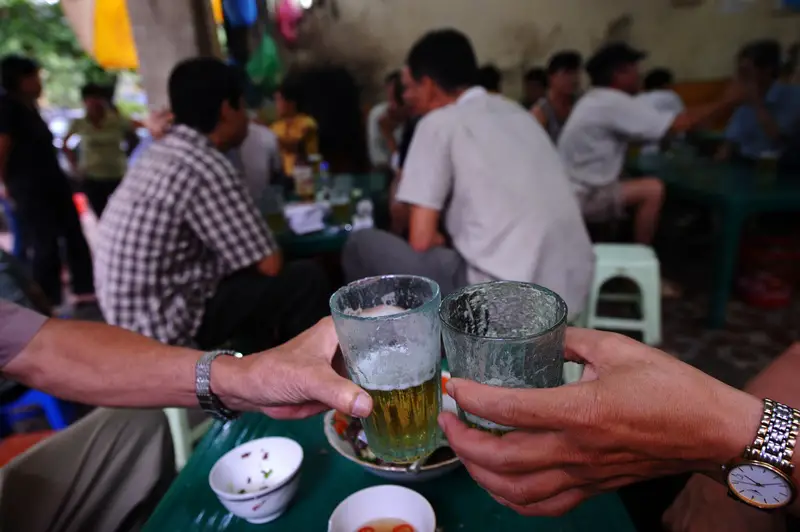For many of us, enjoying a good beer is one of life’s simple pleasures. Just like wine connoisseurs cherish their bottles, there’s a growing community of beer enthusiasts who have made it their mission to collect and store unique brews. Now, if you’re thinking of joining this exciting club or are just curious about how to keep that special six-pack at its prime, you’ve come to the right place. Imagine this: you’re at a barbecue, and you pull out a well-preserved bottle that becomes the talk of the party. The key is in the details – knowing what affects your beer and how to counteract those elements. In this article, we’ll journey from the brewery’s gates to the cozy corners of your home, ensuring every sip you take is as delightful as the brewmaster intended. Let’s dive into the world of beer with enthusiasm and a thirst for knowledge!
Understanding Beer’s Key Ingredients and Their Roles
Ah, the magical world of brewing! When you first pop open a bottle of beer, it’s hard to imagine the multitude of ingredients and processes that went into creating that liquid gold. The major players in brewing are water, malt, hops, and yeast. Each ingredient plays a distinct role, contributing to the beer’s flavor, aroma, and texture.
Think of it as a symphony where every musician plays their part. For instance, the hops add bitterness to balance the sweetness of the malt, while yeast transforms the sugars into alcohol, giving beer its kick. Now, if you’re storing your precious collection, ensuring that these ingredients remain in harmony is crucial. Many enthusiasts turn to places like secure storage units in Hammond, LA, where they can trust their beer will remain undisturbed and in optimal conditions. The better we understand these components, the more we can appreciate every bubbly sip and keep it tasting fresh for longer.
How Temperature Affects Flavor and Longevity
Ah, the dance of temperature and taste! Have you ever wondered why certain beers are recommended to be enjoyed at specific temperatures? Well, there’s a science behind it, and understanding it can elevate your beer-drinking experience. Like a well-choreographed ballet, temperature plays a pivotal role in how we perceive the flavors of a beer.
Before we dive into the details, let’s break down some general rules of thumb about beer temperatures:
- Light Lagers and Pilsners: Best at 38-45°F (3-7°C)
- Wheat Beers and IPAs: Optimal around 45-50°F (7-10°C)
- Stouts and Porters: Ideal at 50-55°F (10-13°C)
- Belgian Ales: Perfect between 50-60°F (10-15°C)
- Barleywines and Aged Ales: Shine at 55-60°F (13-15°C)
The intricate flavors of each beer type are magnified or subdued based on its serving temperature. For instance, the nuances of a good stout can get lost if it’s too cold. For a more in-depth look at how temperature affects different beverages, the National Institute on Alcohol Abuse and Alcoholism has a treasure trove of information.
Now, when storing your collection, ensuring that your beers are at the right temperature is essential. After all, beer is like a living entity, and just like us, it thrives best under the right conditions. Cheers to keeping our beers happy and flavorsome!
Choosing the Right Storage Containers and Materials
Every great beer adventure starts with the right gear, and in our case, it’s all about finding the best home for our beloved brews. Picture this: you’ve been on a quest, exploring local craft beer shops and returning home with a few rare finds. The journey doesn’t end there; it’s just the beginning!
Glass bottles are often the go-to for most beer lovers. They’re not just iconic; they offer a protective barrier against external elements, ensuring that the contents inside remain pure and untouched. But then there’s the eternal debate: cap or cork? While capped bottles are more common and offer a good seal, corked bottles evoke an old-world charm and are often used for specialty and aged brews.
And let’s not forget about cans. Over the years, they’ve earned their rightful place in the beer world. Not only are they lightweight and easy to stack, but they also prevent light from reaching the beer, one of its known adversaries.
Whichever container you choose, remember it’s like a protective shield for your beer, guarding its flavor and essence. So, give your beer the home it deserves, and in return, it’ll reward you with unparalleled taste and joy.
The Role of Light in Protecting Beer Quality
Ah, the beautiful dance of sunlight and shade! While we may bask in the sun’s warmth, our beers? Not so much. It’s a little-known fact outside of brewing circles, but light can play the villain in our beer’s story. When beer is exposed to light, it can undergo a chemical reaction leading to what is often called “skunky” flavors, which is definitely not on any beer lover’s wishlist.
Here’s a brief illumination on the matter:
- UV Rays: These can rapidly degrade the beer, affecting its taste and aroma.
- Clear Bottles: While they might look appealing, they offer the least protection against light.
- Brown Bottles: These are your beer’s best friend, offering significant protection against harmful rays.
If you’re interested in diving deeper into the science behind this, the Smithsonian’s page on food and beverages can be a delightful resource.
So, next time you’re arranging your collection or picking a spot to store your latest acquisition, think like a vampire. A little shade and darkness can go a long way in ensuring your beer remains as delightful as the day it was bottled.
Tips for Organizing and Rotating Your Collection
Strolling down memory lane with a bottle in hand is a treat every beer enthusiast cherishes. Each bottle tells a story, and ensuring that tale remains vivid requires some behind-the-scenes work. Picture your beer collection like a small library. Every book has its right spot, and every brew has its optimal position. First and foremost, it’s essential to know which beers are age-worthy and which ones should be enjoyed sooner rather than later. Did you know, for example, that the temperature kills yeast? If not managed properly, it can have a direct impact on the beer’s character.
Always keep an eye on the dates. Older beers should be shifted to the front, ensuring they’re consumed before their younger counterparts. It’s like a gentle dance, with each beer bottle gracefully taking its turn in the spotlight. By rotating and organizing, you not only safeguard the quality but also make each sip a delightful journey through time. Remember, every beer has its moment; let’s make sure it shines when it’s time.
Savoring the Finest Brews at Their Best
The world of beer is vast and filled with flavors waiting to be discovered. As enthusiasts, our role isn’t just to taste but to preserve and protect the essence of every bottle. By understanding the nuances of storage, we can ensure our collection remains vibrant, offering us a joyful sip every time. Here’s to the stories, adventures, and memories each brew brings to our lives. May our beer always reflect the passion and care we put into it.

I am a passionate beer connoisseur with a deep appreciation for the art and science of brewing. With years of experience tasting and evaluating various beers, I love to share my opinions and insights with others and I am always eager to engage in lively discussions about my favorite beverage.
















